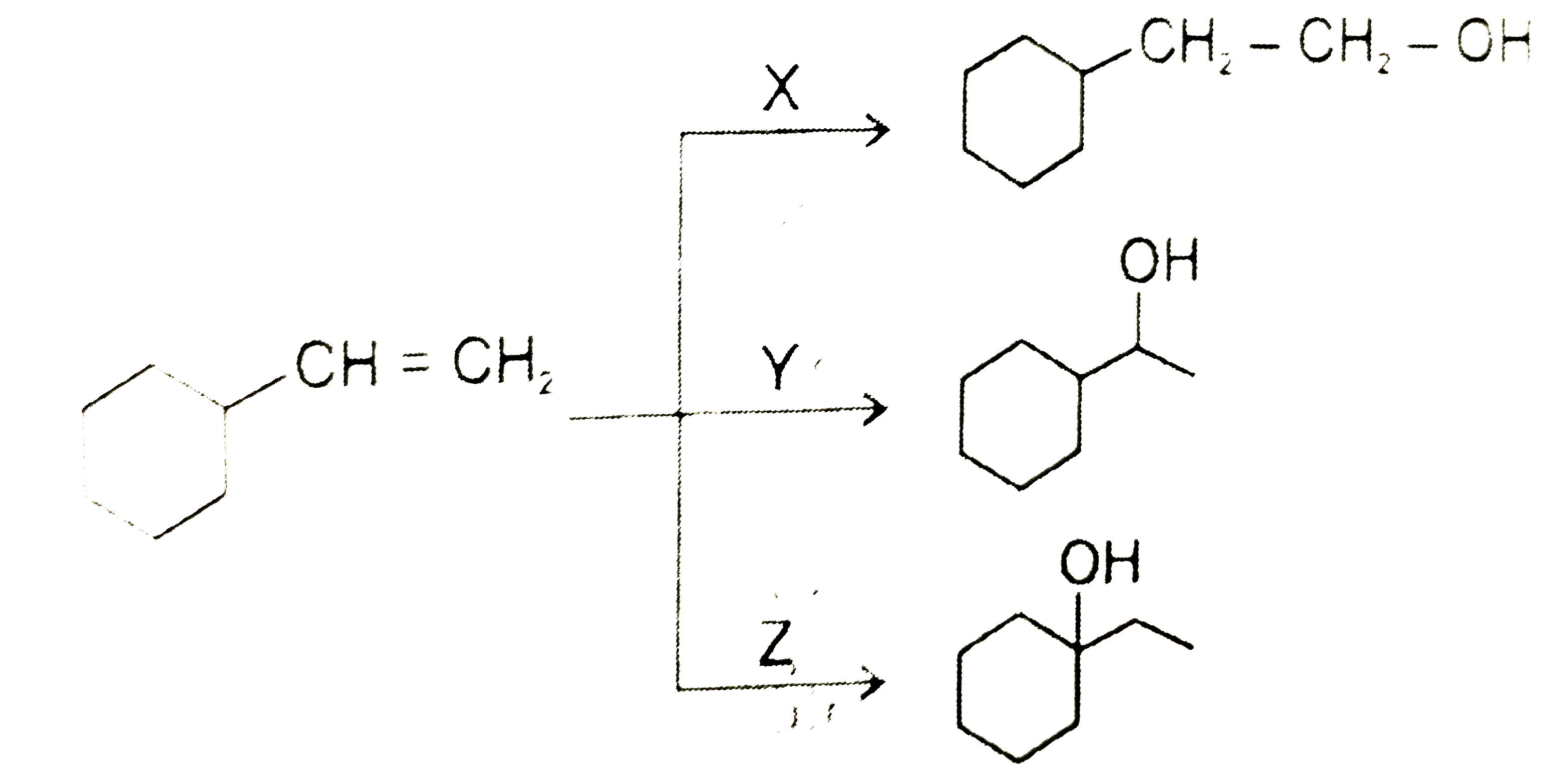Benzoic acid is treated with and the product (X) formed is reacted with ammonia to give (Y). (Y) on reaction with and KOH gives (Z). (Z) in the reaction is
aniline
chlorobenzene
benzamide
benzoyl chloride
To solve the given question step by step, we will follow the reactions mentioned in the video transcript.
Step 1: Reaction of Benzoic Acid with SOCl2
- Starting Compound: Benzoic Acid (C6H5COOH)
- Reagent: Thionyl Chloride (SOCl2)
- Reaction: When benzoic acid is treated with SOCl2, it undergoes a reaction to form benzoyl chloride (C6H5COCl).
Chemical Equation:
C6H5COOH+SOCl2→C6H5COCl+SO2+HCl
- Product (X): Benzoyl Chloride (C6H5COCl)
Step 2: Reaction of Benzoyl Chloride with Ammonia
- Starting Compound: Benzoyl Chloride (C6H5COCl)
- Reagent: Ammonia (NH3)
- Reaction: Benzoyl chloride reacts with ammonia to form benzamide (C6H5CONH2).
Chemical Equation:
C6H5COCl+NH3→C6H5CONH2+HCl
- Product (Y): Benzamide (C6H5CONH2)
Step 3: Reaction of Benzamide with Br2 and KOH
- Starting Compound: Benzamide (C6H5CONH2)
- Reagents: Bromine (Br2) and Potassium Hydroxide (KOH)
- Reaction: Benzamide undergoes a reaction known as the Hofmann degradation, which converts benzamide to aniline (C6H5NH2).
Chemical Equation:
C6H5CONH2+Br2+KOH→C6H5NH2+KBr+H2O+CO2
- Product (Z): Aniline (C6H5NH2)
Final Answer
- The final product (Z) formed in the reaction sequence is Aniline (C6H5NH2).
---
- Starting Compound: Benzoic Acid (C6H5COOH)
- Reagent: Thionyl Chloride (SOCl2)
- Reaction: When benzoic acid is treated with SOCl2, it undergoes a reaction to form benzoyl chloride (C6H5COCl).
Chemical Equation:
C6H5COOH+SOCl2→C6H5COCl+SO2+HCl
- Starting Compound: Benzoyl Chloride (C6H5COCl)
- Reagent: Ammonia (NH3)
- Reaction: Benzoyl chloride reacts with ammonia to form benzamide (C6H5CONH2).
C6H5COCl+NH3→C6H5CONH2+HCl
- Starting Compound: Benzamide (C6H5CONH2)
- Reagents: Bromine (Br2) and Potassium Hydroxide (KOH)
- Reaction: Benzamide undergoes a reaction known as the Hofmann degradation, which converts benzamide to aniline (C6H5NH2).
C6H5CONH2+Br2+KOH→C6H5NH2+KBr+H2O+CO2
- The final product (Z) formed in the reaction sequence is Aniline (C6H5NH2).
Topper's Solved these Questions
- AMINES BOOK - NCERT FINGERTPS ENGLISHCHAPTER - AMINES EXERCISE - Classification
2 Videos
- AMINES BOOK - NCERT FINGERTPS ENGLISHCHAPTER - AMINES EXERCISE - Preparation Of Amines
5 Videos
- ALDEHYDES, KETONES AND CARBOXYLIC ACIDSBOOK - NCERT FINGERTPS ENGLISHCHAPTER - ALDEHYDES, KETONES AND CARBOXYLIC ACIDSEXERCISE - Assertion And Reason
15 Videos
- BIOMOLECULESBOOK - NCERT FINGERTPS ENGLISHCHAPTER - BIOMOLECULESEXERCISE - Assertion And Reason
15 Videos
Similar Questions
Knowledge Check
A primary alcohol, C3H8O(W) on heating with sulphuric acid undergoes dehydration to give an alkene , (X), which reacts with HCl to give (Y). (Y) on treatment with aqueous KOH gives compound (Z),C3H8O. Compounds (W) and (Z) are :
Afunctional isomersBposition isomersCchain isomersDstereoisomers .
α-Toluic acid in reaction withBr2+Fe gives
View SolutionGive balanced equation for the reaction:
Formaldehyde is treated with ammonia.
View SolutionA dichloroderivative (A) on treating with KCN followed by acid hydroysis and heating gives a monobasic acid (B) along with liberation of CO2. (B) on heating with liquid ammonia followed by treating with Br2/KOH gives (C ) which on treating with NaNO2 and HCl at low temperature followed by oxidation gives a monobasic acid (D) having molecular mass 74. 'C' in the whole process would be
View SolutionGive balanced chemical equation for the following reactions :
Formaldehyde is treated with ammonia.
View SolutionOn reaction with excess ammonia, chlorine gas gives nitrogen gas along with a compound X. X reacts with Ca(OH)_2 and gives Y, a colorless gas with pungent smell. Y on reaction with excess of chlorine gives Z and HCl. What is Z?
View SolutionA compound X react with Na2O2 and forms Y, Y is reacted with nitric acid and then treated with ammonium molybdate to give yellow ppt.
View SolutionComplete the reaction :
P4+SOCl2 gives
View Solution

